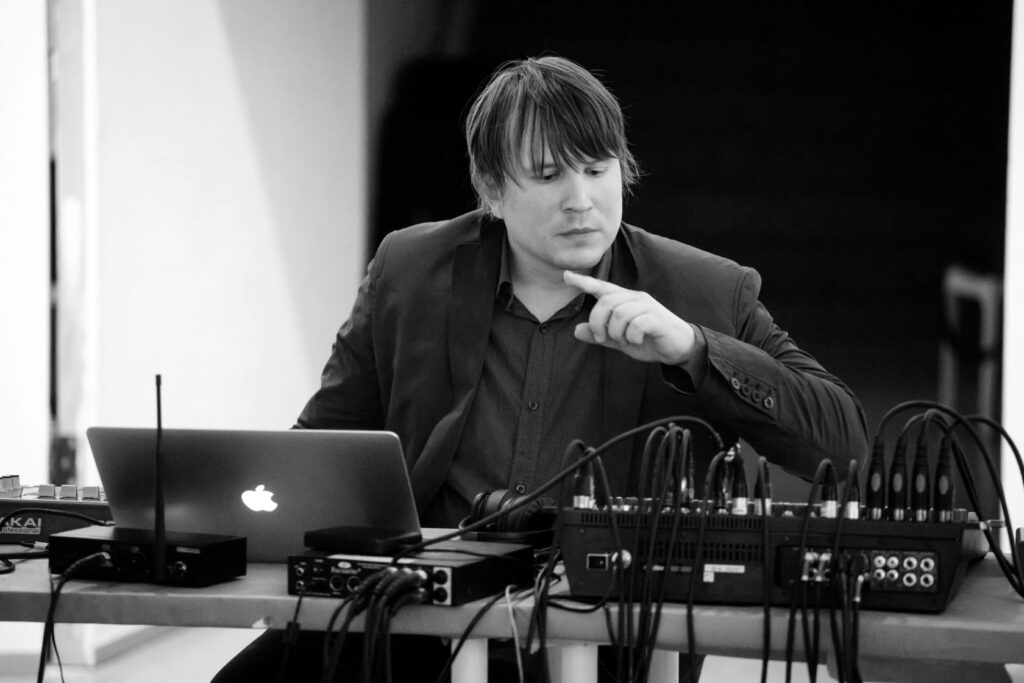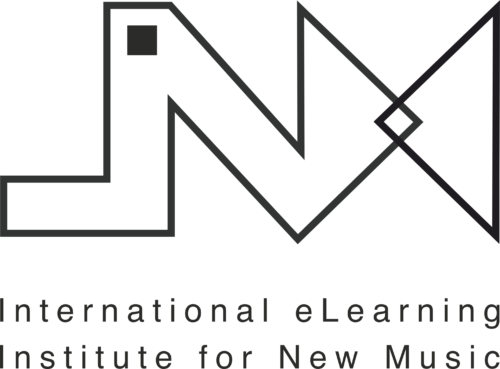Programming Synthesizers in Max
- Next Semester Starts: Feb. 28, 2026
- Application Deadline: Jan. 14, 2026
This advanced course focuses on the design, programming, and implementation of synthesizers in Max. Students will explore multiple synthesis techniques—including subtractive, additive, modulatory, and granular approaches—and develop interactive, polyphonic, and multichannel instruments. The program emphasizes both theoretical understanding and practical application, allowing students to create versatile synthesizers for live performance, multimedia projects, or research.
- What You’ll Learn:
- Build Synthesizers from the Ground Up
- Master Core Synthesis Techniques
- Create Polyphonic & Multichannel Instruments
- Design for Live Performance

If you have questions or need assistance, our admissions team is here to help. Contact us here.
Course Overview:
This advanced course focuses on the design, programming, and implementation of synthesizers in Max. Students will explore multiple synthesis techniques—including subtractive, additive, modulatory, and granular approaches—and develop interactive, polyphonic, and multichannel instruments. The program emphasizes both theoretical understanding and practical application, allowing students to create versatile synthesizers for live performance, multimedia projects, or research.
Duration of Course:
28 February 2026 – 26 April 2026 (6 lessons)
Application Deadline: 14 January 2026
Syllabus:
The program consists of six lectures and hands-on sessions:
1. Introduction to Synthesizer Programming;
● Overview of synthesizer techniques in Max;
● Receiving and processing MIDI input;
● Virtual keyboard implementation;
● Converting MIDI note numbers to frequency and velocity to amplitude;
● Envelope design and note on/off handling via MIDI;
● Polyphony management.
2. Subtractive Synthesis
● Principles of subtractive synthesis: removing harmonics from rich spectral waveforms;
● Using a single oscillator and filter;
● Advanced techniques: timbral envelopes, LFO modulation, velocity-dependent timbre.
3. Additive Synthesis
● Historical context: organ as the precursor, laboratory solutions (ANS, UPIC, Methasynth), and commercial instruments (electric organ);
● Generating overtones with mc objects;
● Polyphony challenges: combining multiple harmonics with multiple voices;
● Timbral envelopes, harmonic vs. inharmonic sounds.
4. Modulatory Synthesis
● Types of modulation: RM, AM, PM, FM;
● FM synthesis: efficient CPU usage, maximum timbral diversity;
● “Fast vibrato” concept;
● Historical reference: John Chowning, inventor of FM synthesis;
● Managing parameters: carrier and modulator frequency/amplitude, harmonicity ratio, modulation index;
● Influence of harmonicity on pitch clarity and timbre, modulation index on brightness;
● Additional timbral modifiers: LFO, envelopes, velocity.
5. Granular Synthesis
● Theoretical foundations: Xenakis’ “sound from small grains,” Stockhausen’s unified time-field theory;
● Using pre-recorded audio as source material;
● Grain selection and manipulation (duration, playback rate, density, randomization);
● Threshold of 20 Hz: changing parameter interpretation;
● Creating both playable periodic textures and evolving soundscapes;
● Implementation strategies and creative exploration.
6. Patch Organization and Project Finalization
● Creating presets and event routing using objects like qlist, route, coll;
● Signal routing: subpatches, matrices, sends;
● Integration of processing devices: bpatcher, Max-for-Live devices;
● Local patch control with pcontrol;
● File and project management: projects, collective files, standalone applications;
● Student project finalization and presentation.
Learning Outcomes:
By the end of the course, students will:
● Understand main synthesis techniques and their theoretical foundations;
● Build functional synthesizers using Max for live performance and multimedia applications;
● Implement polyphony, multichannel processing, and timbral modulation;
● Structure patches and projects for reliability, portability, and creative flexibility;
● Benefit from close instructor feedback in a small-group environment.
Course-Specific Requirements:
Completion of the Foundations of Max course or equivalent knowledge.
Prerequisite Knowledge:
● Completion of the Foundations of Max course, or equivalent familiarity with Max’s environment and object types;
● Understanding of basic sound concepts (frequency, amplitude, overtones, decibels) and music theory (octaves, semitones, intervals);
● Familiarity with digital audio principles (sampling rate, bit depth).
Who Can Apply:
Musicians, composers, sound designers, and multimedia artists interested in visual programming for sound and interactive media.
Technical Requirements:
Minimum Setup:
● Computer;
● Headphones (e.g., Sennheiser HD 300);
● Installed Max 7.
Recommended Setup:
● High-performance CPU;
● Audio interface (e.g., RME);
● Nearfield monitors (e.g., Genelec);
● Studio headphones;
● Installed Max 8.
Online Learning Guidelines:
● Stable internet connection for live sessions;
● Active participation in discussions and assignments;
● Timely submission of projects and exercises.
Tuition Fee:
● Full tuition for the semester course: 140 Euros
● Payment due within 7 days of receiving admission confirmation
Installment Plan:
● Payment may be split into two parts:
300 Euros within 7 days of admission confirmation
270 Euros one month after the semester begins (exact deadline communicated upon admission)
● Failure to complete the second payment by the stated deadline will result in dismissal from the semester program
Payment Methods:
● Credit/debit card via ILINM online payment system
● Bank transfer
Refund Policy:
● All payments are non-refundable
● Strict adherence to payment deadlines is required for participation in Academy activities
Who is this course for?
For students, musicians, and sound artists who have completed a basic Max course and wish to specialize in synthesizer programming.
Do I need prior experience with synthesizers?
Yes — prior knowledge of Max and basic sound concepts is required.
What synthesis techniques will be covered?
Subtractive, additive, modulatory (RM, AM, PM, FM), and granular synthesis.
Will I learn polyphony and multichannel processing?
Yes — the course includes strategies for polyphonic instruments, multichannel sound, and timbral control.
Which Max version should I use?
Minimum: Max 7. Recommended: Max 8 for full feature access.
How are classes delivered?
Online, via live sessions. Active participation and timely submission of exercises are expected.
7. How do I apply?
Submit an online application including a short biography and a motivational statement.
What is the tuition?
Full tuition: 44,900 ₽, with an optional two-part payment plan.
Are payments refundable?
No — all tuition payments are strictly non-refundable.
Will I receive a certificate?
Yes — participants who complete all assignments and projects will receive an official certificate.
Course Leader





